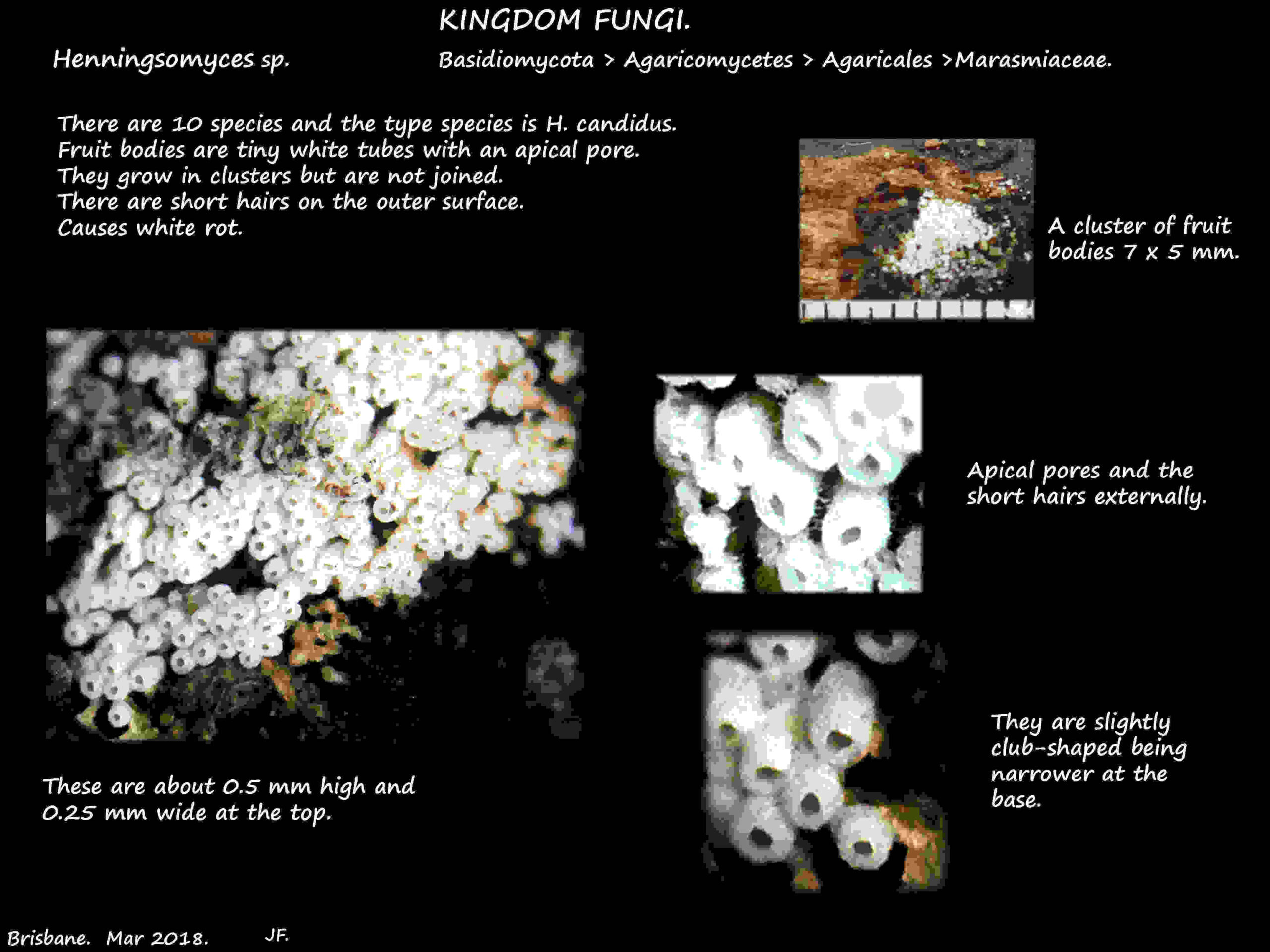Henningsomyces.
Fungi > Division Basidiomycota > Class Agaricomycetes > Order Agaricales > Family Marasmiaceae.
The 10 Henningsomyces species are part of a group loosely known as the Cyphelloid fungi.
Cyphelloid is a descriptive term for fungi with small disc, cup or tube-shaped fruit bodies.
Seen in a few other Basidiomycete families they resemble some Ascomycetes.
Spores are formed on the surface of a disc or in a cup or tube.
Cup and tube fruit bodies may have hairs on the rim or outer surface.
They are wood rot fungi and are commonly found in dense clusters.
Henningsomyces candidus occurs in S.E. Queensland.
They are not often seen as they grow on the underside of dead wood.
The tiny fruit bodies grow in dense clusters.
In the clusters the fruit bodies may be free or fused to each other.
They can be so dense they superficially look like a crust fungus.
Each hollow white tubular fruit body is under 1 (2) mm long and 0.5 mm wide.
Some may be on a stalk-like base up to half the length of the fruit body.
The outer surface is smooth and spores are formed on the inner wall of the tubes.
Basidia cells, in a smooth white to cream hymenium have 2 to 4 spores.
Like most Basidiomycetes the tubules open downwards.
Australian species may have a few hairs around the opening.
J.F.


